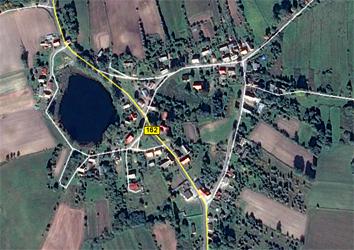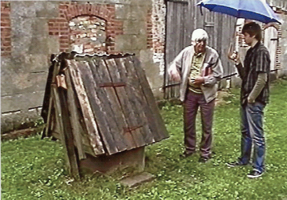
The village of Labenz, in what was then Pomerania, is the ancestral home of the earliest of our known Leistiko ancestors. Pomerania existed as a country from about the 5th or 6th century A.D. until World War II, after which it was divided between Poland, East Germany, and Russia. You'll find this brief History of Pomerania to be interesting reading.
Labenz is in the section of Pomerania that became part of Poland. At the time our Leistiko ancestors (then spelled "Leistikow") lived there, Labenz was in the County (Kreis) of Schiefelbein, named after the town of the same name. Schiefelbein, also spelled Schivelbein, is now the Polish town of Swidwin.
The first map shown below is a section taken from a map located in the Blackie & Sons Atlas (Edinburgh, 1882). You'll find Labenz just below (about 10 miles south of) Schiefelbein.
 |
The following image is a clip from GoogleEarth of Poland. Schiefelbein is now called Swidwin. Labenz does not show at this scale, as it is a very small village. However if you open GoogleEarth and zoom in to the area inside the yellow circle, you will find Labenz (lower left). Even more interesting, Google StreetView is available for the main roads in Labenz, so you can "drive" through the village. You can even find the church (lower right), where many Leistikow ancestors were married.
According to Andreas Leistikow, who was born in Labenz, though the church was not destroyed in WWII, all the church records were burned, including all records of births, baptisms, confirmations, marriages, and deaths. Pastor Rohde, who was paster of the church in Labenz 1945, tried to save the records, but he was forced at gunpoint to hand over the books. The Poles did not want anything reminiscent of the German history of the area to survive. Thus all this valuable data was lost.

|


|

|

|